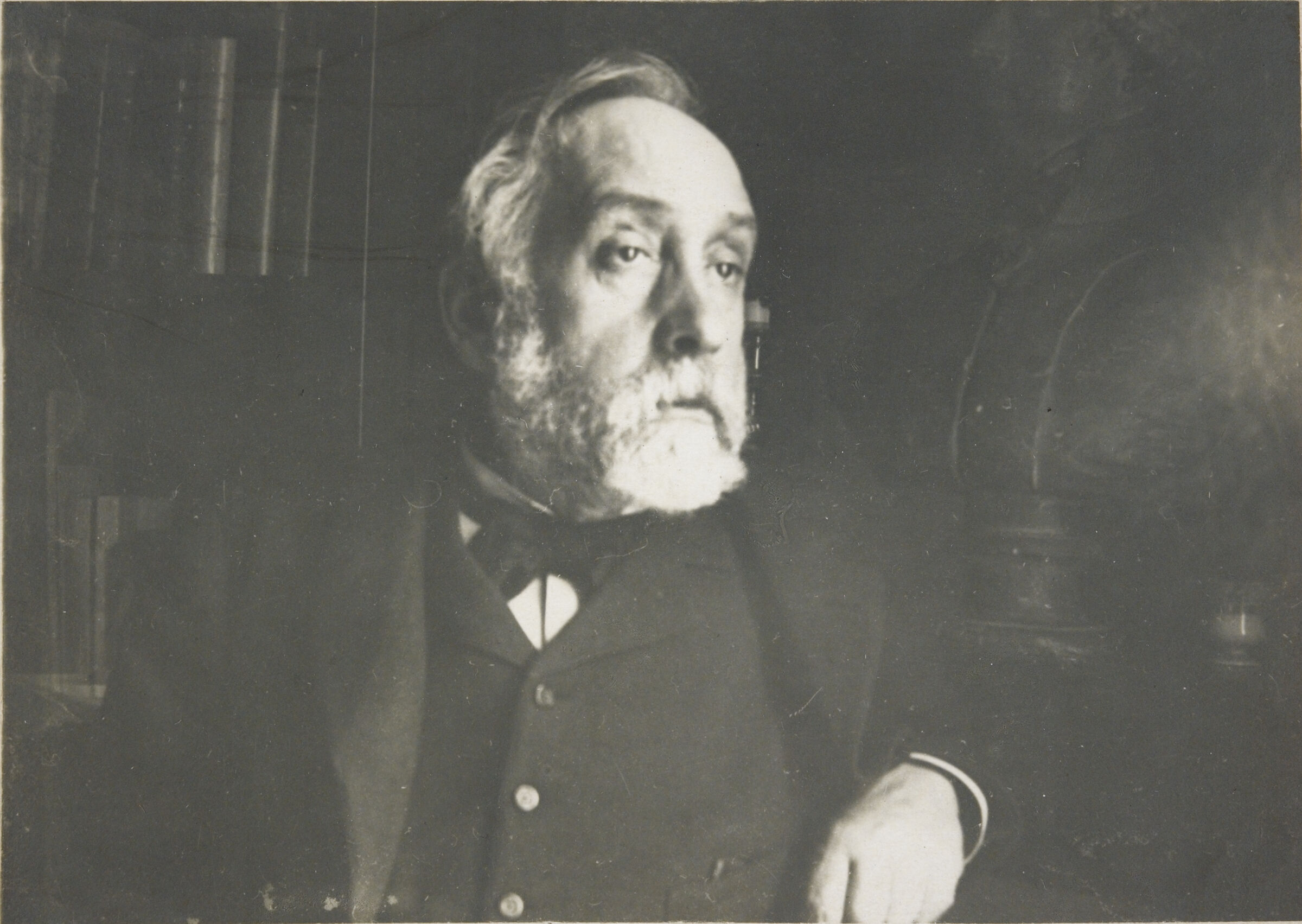ABOUT THE ARTIST
 Hilaire-Germain-Edgar Degas, Untitled (self-portrait in library), probably autumn 1895, gelatin silver print. Harvard Art Museums/Fogg Museum, Cambridge, Massachusetts, Richard and Ronay Menschel Fund for the Acquisition of Photographs, P1997.42
Hilaire-Germain-Edgar Degas, Untitled (self-portrait in library), probably autumn 1895, gelatin silver print. Harvard Art Museums/Fogg Museum, Cambridge, Massachusetts, Richard and Ronay Menschel Fund for the Acquisition of Photographs, P1997.42Edgar Degas was born in Paris on July 19, 1834. He became interested in painting early on, while still in secondary school at the Lycée Louis-le-Grand. However, Degas began law studies in the fall of 1853. In 1855, following a fateful encounter with the influential artist and pedagogue Jean-Auguste-Dominique Ingres, Degas enrolled at the École des Beaux-Arts to study drawing. One year later, in 1856, Degas traveled to Italy to further his study of art. The three years that he spent there, seeing and copying works by artists of the Renaissance and examples from classical antiquity, were pivotal to his development.
After a rigorous art education copying the art of the past, Degas turned overwhelmingly to contemporary subject matter: ballet dancers, performers, and cabaret interiors; horses, horse races, and jockeys; bathers; and portraits of fellow artists. In 1870, at the outbreak of the Franco-Prussian War, Degas joined the National Guard. In 1872–73, the artist spent time in New Orleans, where he had relatives, and continued to paint portraits and scenes of contemporary life. When he returned to Paris in 1873, Degas joined the group of independent artists who would later come to be known as the Impressionists. From that point on, Degas gained major recognition as an artist. In addition to paintings, drawings, and pastels, he made sculptures mainly of wax (though they were rarely exhibited) and prints—etchings, lithographs, and monotypes. In 1895, Degas turned largely to photography. However, his intense interest in the medium was brief, lasting only about a year, until 1896.
Degas is most often described as an Impressionist, and indeed he was a core member of the original group. He participated in all but one of the Impressionist exhibitions, helped coordinate their organization, and invited other artists to take part. Yet he resisted being classified as an Impressionist, in part because his engagement with prior artistic traditions and dislike of painting en plein air conflicted with some of the group’s best-known precepts and practices.
Throughout his career Degas maintained close friendships with many other well-known artists, including Mary Cassatt. Cassatt was the subject of several of Degas’s prints, paintings, and drawings, and she helped establish a market for his work in the United States. Degas, however, was a notoriously difficult and argumentative personality. His antisemitic and misogynistic leanings ultimately estranged him from many of his artist contemporaries and friends, including Cassatt, Pierre-Auguste Renoir, and others. As time went on his isolation increased, and his poor eyesight, which had been declining for most of his life, caused him to stop producing around 1912. Degas died in Paris in 1917.
